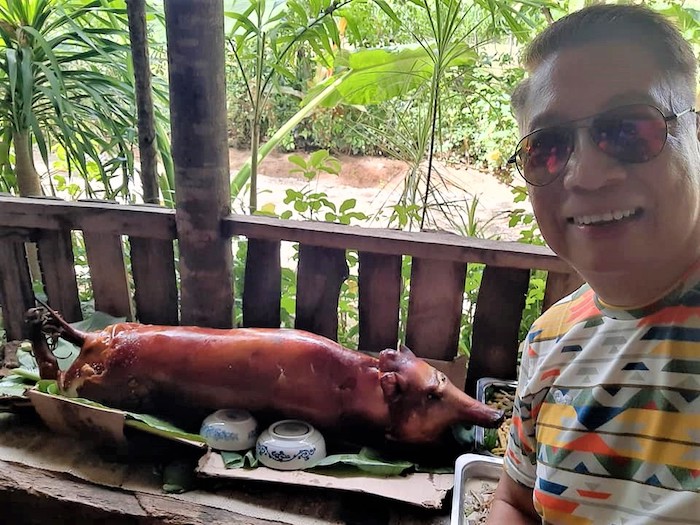Hinayopang baboy ka! Or The Pig Paradox

By Rex Catubig
BECAUSE it is holiday and fiesta season, glorious food takes center stage in celebrations. And the lowly pig is undeniably the king of the festive table.
Ham claims an exalted position, but the lechon with its crisp skin and flavorful meat is the all-time fave and boasts of a worshipful fan base.
Yet despite this exalted and revered status in the local culinary circuit, the live pig is at the tail end of public esteem.
No other animal is more despised, maligned and vilified. In fact, it is considered the worst and vilest of its kind and spoken of only in derogatory terms. The crunchiest cuss words and meanest slurs, “Hayop ka! Baboy ka!”, derive from the word pig and intended for anyone deemed despicable.

Even in health and nutrition circles, the greatest disdain is reserved for its meat, fat, skin, and other parts. Deemed disease causing and deadly, every inch of this poor porcine creature is stamped with the seal of depravity and marked with the scarlet letter.
It’s dirty, smelly, sloppy, unhygienic, and totally unworthy.
Then miraculously, the grace of renewed understanding began to unravel and show the path to redemption. The first reversal of its sinful nature is the meritorious proclamation by food authorities that pork meat is the new white meat. It is a welcome perception that the carnivores victoriously savored while it allayed the fears of the hypochondriacs.
But the latest and greatest epiphany is the pronouncement by scientists that pork fat is one of the 100 most nutritious foods (connoisseurs of binocayon baboy, take note)–proudly sharing the distinguished company of nutritional luminaries such as almonds, cherimoya, kale, et al. In fact, it is ranked number 8 in the nutrition hierarchy with a nutritional score of 73 in the scale of 100.
Sadly, as this was taking place and earning hosannas in the food world, the plague of swine fever disease struck unmercifully. All of a sudden, pigs and hogs alike were dying. And the fearsome death was spreading everywhere. Despite the assurance of animal disease experts that eating contaminated meat does not pose any health hazard among humans, the meat was shunned by buyers. It was unacceptable and unscrupulous to be passing diseased meat to consumers and totally unappetizing to consume it.
As a result, while there were disease-free hogs, the prevailing scenario drove the pork prices up. This everyday household protein staple has become prohibitive and now worth its weight in gold.
Still, cultural tradition dies hard. The Filipino family will eat salt, so to speak, to save for a family milestone. And it is imperative to observe the time-honored custom by having golden lechon as the centerpiece of the festive celebration.
Lechon defines the wherewithal of a family, the symbol of its pride and arrogant resolve. Ingrained in our DNA, the trait validates our resourcefulness: Lechon will find its way.
Thus, the beloved pig deserves a place of honor, be it so humble, in our Filipino table.
Share your Comments or Reactions
Powered by Facebook Comments








